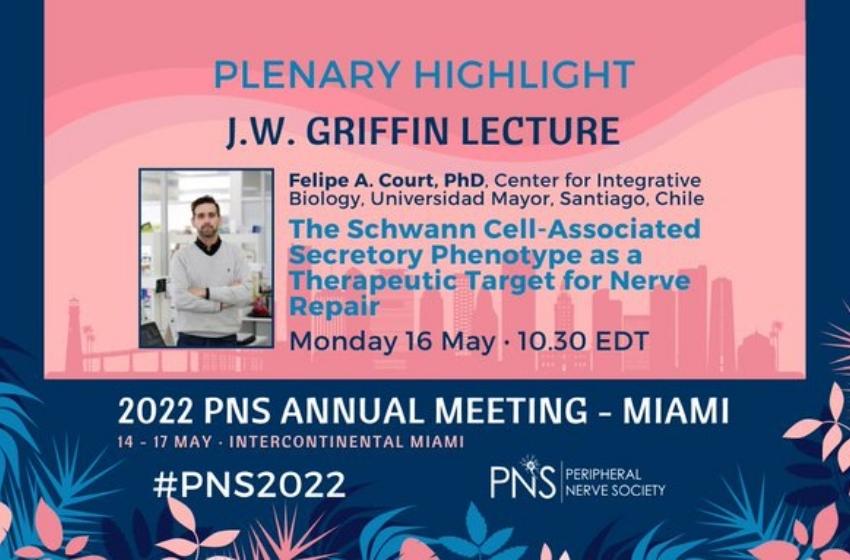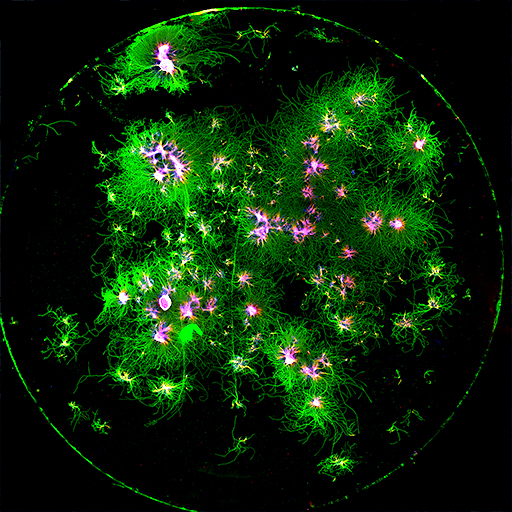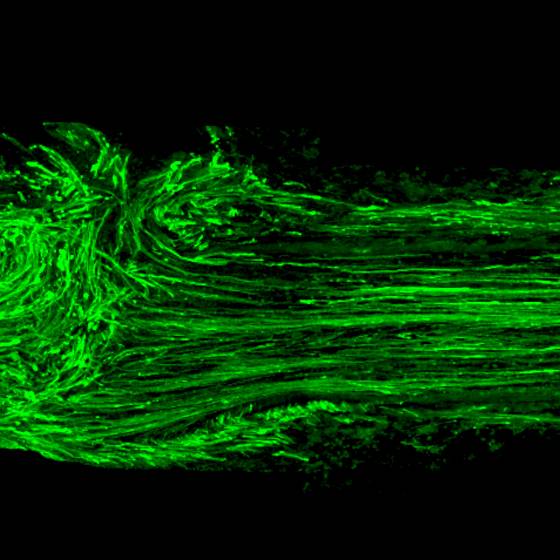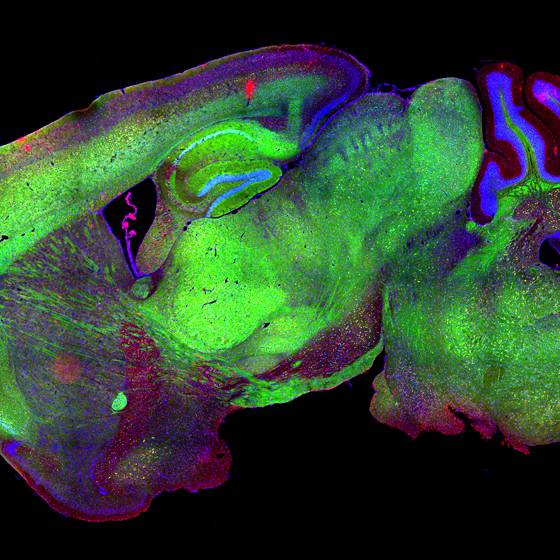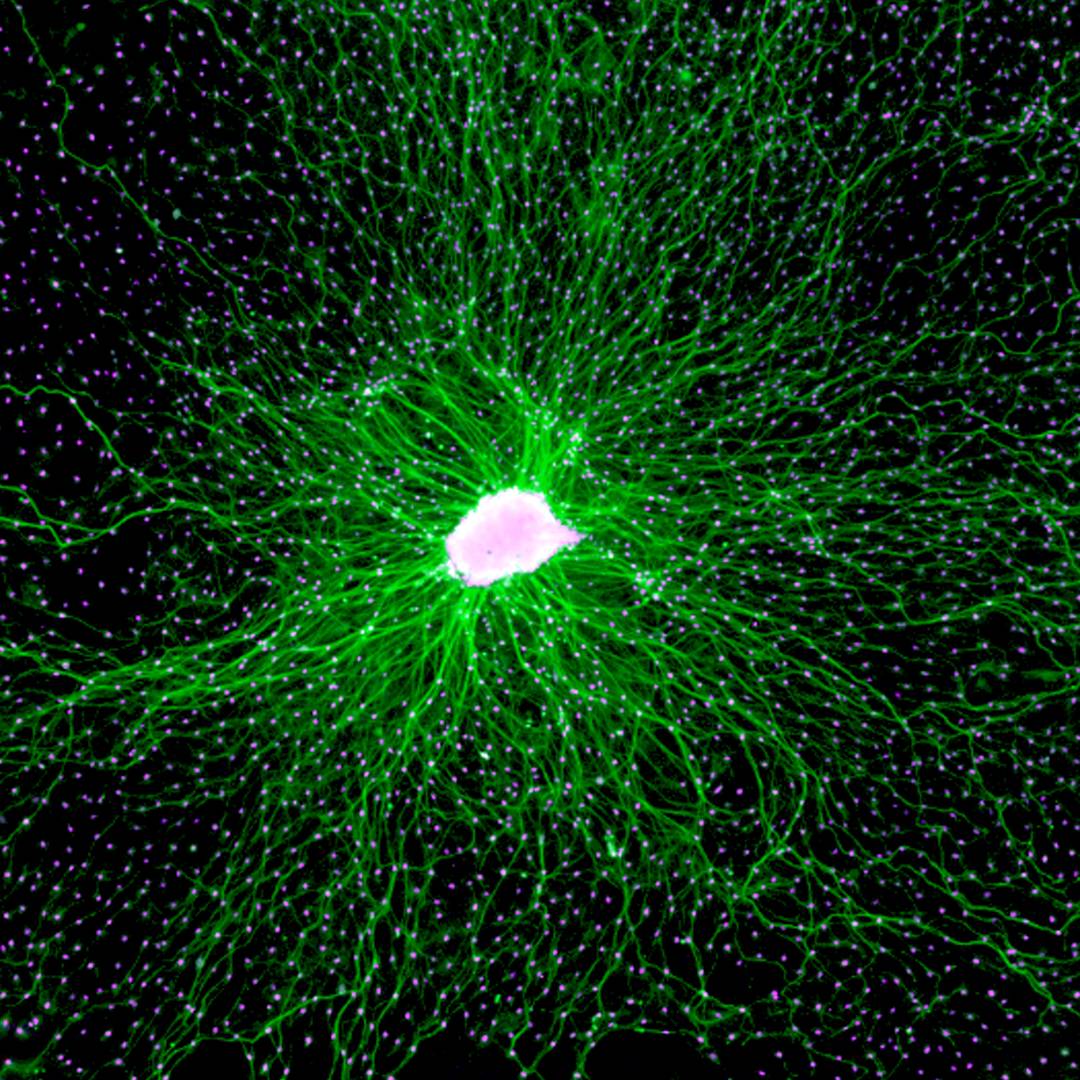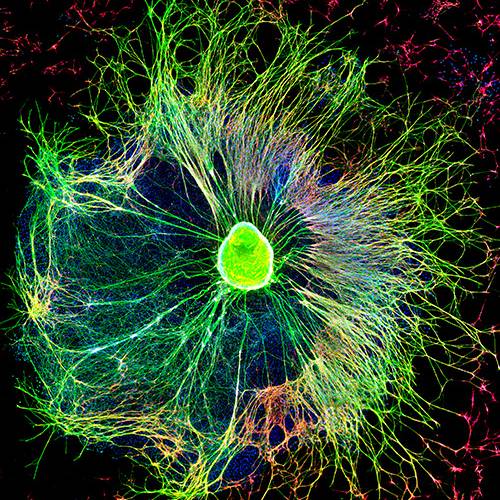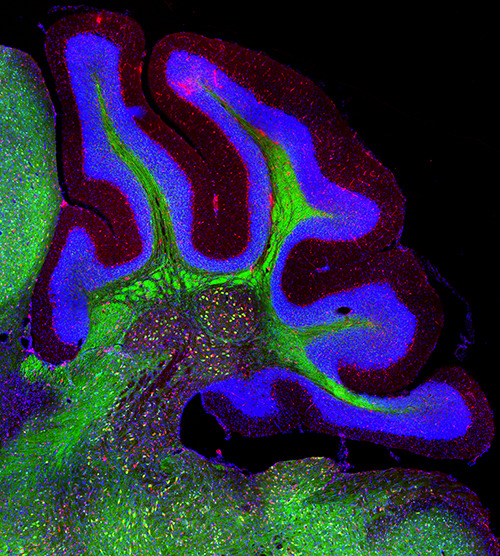Schwann cell regulation of axonal regeneration
In the mammalian nervous system, the regenerative capabilities of neurons show regional variability. In the peripheral nervous system (PNS), axons efficiently regenerate after nerve damage associated to the pro-regenerative effect of Schwann cells. In contrast, in the central nervous system the regenerative capability is poor due to both neuronal intrinsic limitations and glial responses that restrict regeneration. Although, axonal regeneration in the periphery show good regenerative capacity in preclinical models, it still represents a clinical problem associated to delayed repair of peripheral nerves, and the negative effects of aging and other conditions, including diabetes, for axonal regeneration and functional recovery. In the lab, we study how Schwann cells reprogramming regulates axonal regeneration after nerve damage, in order to manipulate this response to enhance axonal regeneration.
Longitudinal section of a sciatic nerve, with regenerating axons crossing a surgically repaired region, axons are labelled using an antibody against the protein SCG10.

Schwann cell exosomes enhance axonal regeneration
In the peripheral nervous system, regeneration of injured axons depends on the reprogramming of Schwann cell from a differentiated phenotype into a phenotype known as repair Schwann cells. Our lab was the first to demonstrate that Schwann cell exosomes enhanced axonal regeneration in vitro and in vivo in laboratory animals, an effect we later showed was dependent on the reprogramming of Schwann cells into a repair phenotype, and associated with the loading of specific miRNA into exosomes and their transfer to axons. In addition, we are exploring the effects of aging, chronic denervation and diabetes in Schwann cell reprograming and axonal regeneration, in order to develop interventions to enhance axonal regeneration in these conditions.
People involved

Daniela Rebolledo
Senior Research Assistant

I am a Biochemist from Pontificia Universidad Católica de Chile (PUC) and PhD in Cell and Molecular Biology from the same university. My PhD thesis research was performed at the Physiology and Biophysics department, University of Washington. My research has focused on the physiology of the neuromuscular system and the pathological mechanisms behind neuromuscular disorders of diverse etiology.

Karina Girardi do Carmo
Postdoctoral fellow

Biologist, Ph.D., and MSc in Cell and Molecular Biology from Oswaldo Cruz Foundation (Fiocruz/RJ). Studying age-dependent decline of regenerative capacity in the peripheral nervous system. Mainly focusing on the contribution of metabolic profile of aging Schwann cells in senescence and particularly exploring the epithelial-mesenchymal transition (EMT) like process.
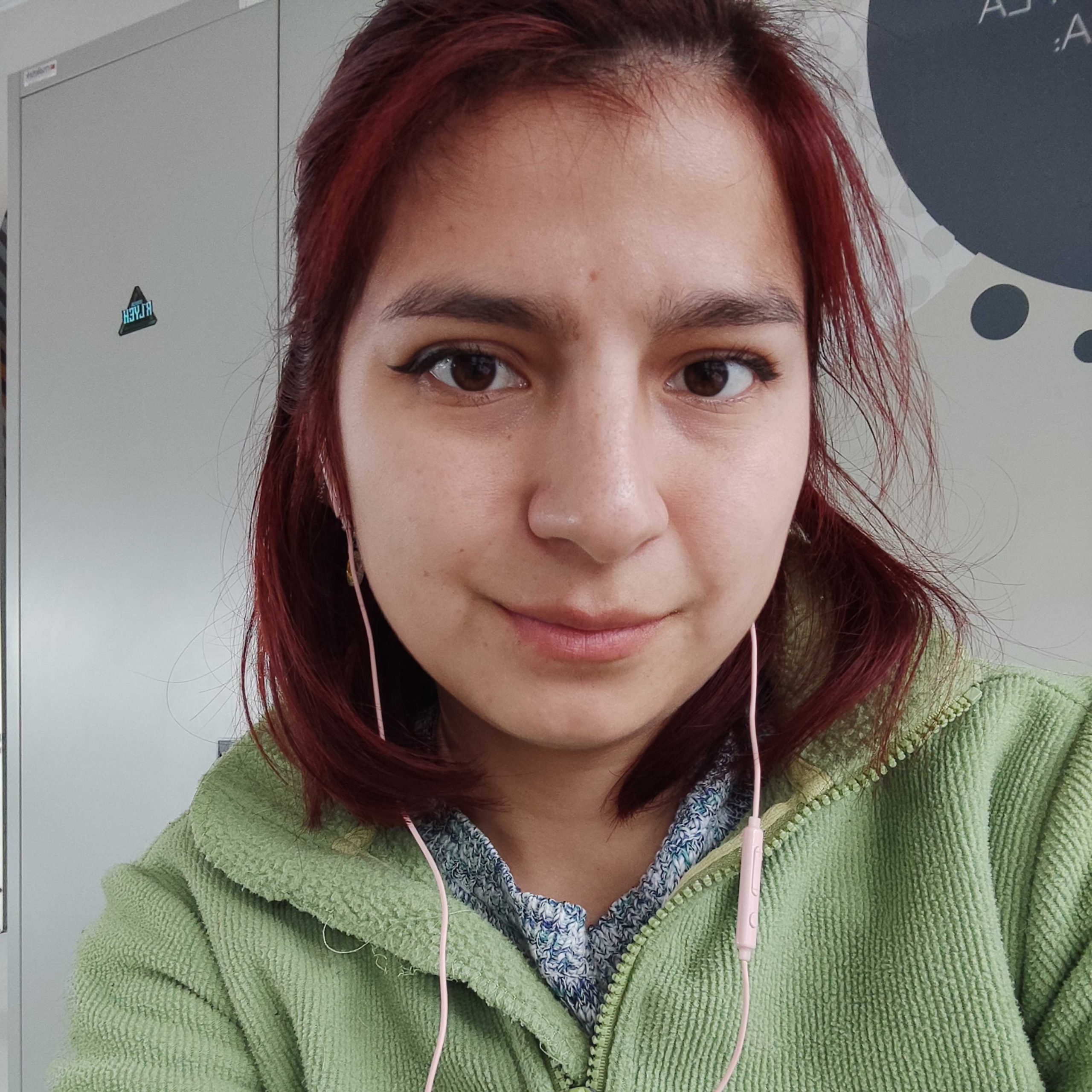
Renata Gallardo
Research Assistant

I studied Medical Technology at the Universidad Mayor acquiring knowledge in histological techniques, immunohistochemistry and immunofluorescence. I am interested in learning more from the world of neurosciences and related pathologies to find new treatments to improve the quality of life in aging.

Camila Duran
Research Assistant

Molecular Biotechnology Engineer from the University of Chile with experience in the study of the cellular and molecular mechanisms of Cdk5 (kinase) involved in peripheral nociception, specifically in its participation in orofacial pain signaling (odontoblasts, trigeminal ganglion and spinal trigeminal nucleus).
Related Publications
PUBLICATIONSDataCNSNeuroRegeneration
octubre 4, 2021
Targeting the UPR transcription factor XBP1 protects against Huntington’s disease through the regulation of FoxO1 and autophagy.
Vidal RL, Figueroa A, Court FA, Thielen P, Molina C, Wirth C, Caballero B, Kiffin R, Segura-Aguilar J, Cuervo AM, Glimcher LH, Hetz C.
Hum Mol Genet. 2012 May 15;21(10):2245-62. doi: 10.1093/hmg/dds040. Epub 2012 Feb 14.
PMID: 22337954
PUBLICATIONSReviewNervous System FxPNSCNS
octubre 4, 2021
Slow axoplasmic transport under scrutiny.
Court FA, Alvarez J.
Biol Res. 2011;44(4):311-21. Epub 2012 Feb 10.
PMID: 22446593
octubre 4, 2021
Chronic intermittent hypoxia-induced vascular enlargement and VEGF upregulation in the rat carotid body is not prevented by antioxidant treatment.
Del Rio R, Muñoz C, Arias P, Court FA, Moya EA, Iturriaga R.
Am J Physiol Lung Cell Mol Physiol. 2011 Nov;301(5):L702-11. doi: 10.1152/ajplung.00128.2011. Epub 2011 Aug 5
PMID: 21821731
PUBLICATIONSDataPNSNeuroRegeneration
octubre 4, 2021
Morphological evidence for a transport of ribosomes from Schwann cells to regenerating axons.
Court FA, Midha R, Cisterna BA, Grochmal J, Shakhbazau A, Hendriks WT, Van Minnen J.
Glia. 2011 Oct;59(10):1529-39. doi: 10.1002/glia.21196. Epub 2011 Jun 8.
PMID: 21656857
Related News
Director del CIB U. Mayor será uno de los principales expositores en congreso internacional sobre enfermedades a los nervios periféricos
mayo 13, 2022
El Dr. Felipe Court dictará una charla plenaria en la reunión anual de la Peripheral Nerve Society que se realizará del 14 al 17 de mayo en Miami (EE. UU.) para dar a conocer los últimos avances en…
Científicos de Inglaterra rejuvenecieron en 30 años las células de la piel de una mujer
abril 20, 2022
«Esto podría traer consecuencias muy importantes no solo en la idea de vivir más, sino que de vivir mejor. Disminuir la edad biológica en personas de la tercera edad, teóricamente, podría disminuir…
